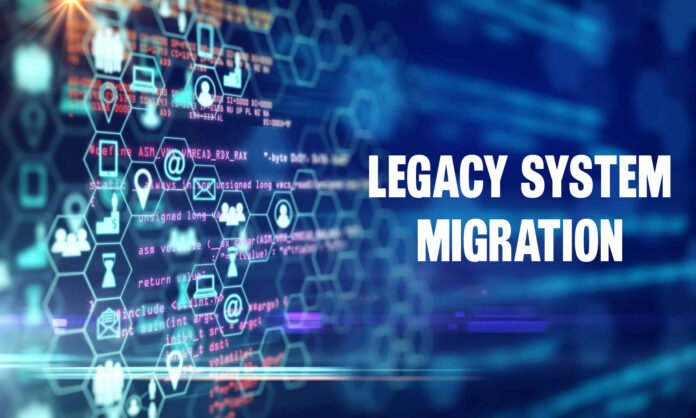The year 2024 is on the horizon and the business world is rapidly advancing towards a digital-first approach. This shift is prompting organizations to assess their technology infrastructure, particularly outdated legacy systems that may impede growth and innovation. This article explores the importance of legacy system migration, the challenges involved, and the top software solutions to consider in 2024 for a successful migration journey.
Understanding Legacy Systems
Legacy systems are old or outdated hardware and software solutions that are still in use within an organization. They are usually characterized by obsolete technology, inflexible structures, high maintenance costs, and a lack of integration with modern systems.
However, not all legacy systems are obsolete. Some may still serve essential functions within a business. But when these systems become a hindrance to adaptability, efficiency, or security, they need to be modernized or replaced. This is where legacy system migration comes into play.
The Need for Legacy System Migration
Legacy system migration refers to the process of moving applications, data, and other business operations from outdated systems to modern infrastructures. The goal is to improve operational efficiency, scalability, security, and the overall performance of the system.
Legacy system migration is driven by several factors:
- High Maintenance Costs: Legacy systems often demand continuous support, which can lead to high costs for troubleshooting, patching, and adapting to changing business needs.
- Limited Scalability: Legacy systems may struggle to adapt to increasing workloads, hindering an organization’s ability to scale operations.
- Security Risks: Outdated systems are more susceptible to security vulnerabilities, putting sensitive business data at risk.
- Lack of Integration: Legacy systems may not integrate well with newer technologies, preventing businesses from adopting innovative solutions.
- Regulatory Compliance: With the constant evolution of industry regulations and compliance standards, legacy systems often struggle to keep up, leading to potential legal and financial repercussions.
Legacy System Migration Approaches
There are several approaches to legacy system migration, each with its own advantages and considerations:
- Rehosting or “Lift and Shift”: This approach involves migrating the existing legacy system to a modern infrastructure without making significant changes to the application. It is relatively quick and cost-effective, but it may not fully address underlying inefficiencies.
- Replatforming: This approach involves upgrading the underlying infrastructure or platform while retaining the existing codebase. This allows for some degree of modernization while minimizing the risk and cost associated with a complete overhaul.
- Refactoring or Re-architecting: This approach involves restructuring the codebase and architecture of the legacy system to align with modern standards. While more time-consuming and expensive, refactoring offers the opportunity to enhance performance, scalability, and maintainability.
- Replacement: In some cases, organizations opt for a complete replacement of the legacy system with off-the-shelf solutions or custom-built applications. This approach provides the most flexibility but requires careful planning and execution to ensure a smooth transition.
Determining the most suitable modernization approach depends on various factors, including the organization’s budget, timeline, business objectives, and the complexity of the existing legacy system.
Legacy System Migration Software to Watch in 2024
Several software solutions have emerged that can aid businesses in their legacy system migration journey. Here are a few to watch in 2024:
- Microsoft Data Migration Assistant: This tool helps businesses upgrade their database schema and data from a source SQL Server environment to a target SQL Server environment.
- AWS Database Migration Service: Part of Amazon Web Services, this service allows the relocation of various workloads, such as apps, databases, and servers, to a new environment.
- Dell EMC Intelligent Data Mobility: This software allows users to manage workloads and data migration through technology and integrates seamlessly into current business needs.
- Integrate.io: Integrate.io provides a unified interface for migrating, transforming, and managing data between different apps.
- Stitch Data: An ETL tool that eases the transformation, cleansing, and preparation of data for analysis.
Each of these software solutions offers unique features and benefits. Businesses should select the tools that best cater to their specific requirements to ensure a seamless migration process.
Legacy System Migration Challenges
While these software solutions offer numerous benefits, they don’t eliminate the potential challenges of legacy system migration:
- Complexity: Legacy systems often have interdependencies, making modernization a complex endeavor.
- Resource Constraints: Modernization projects require time, skills, and financial resources.
- Data Migration: Migrating data from legacy systems to modern platforms can be challenging and requires careful planning and execution.
- Resistance to Change: Employees may resist changes, necessitating change management strategies.
- Compatibility Issues: Ensuring compatibility between modernized systems and existing processes can be a challenge.
- Regulatory Compliance: Organizations must ensure that modernized systems comply with industry regulations and privacy laws.
2024 Software App Migration Outlook
Legacy system migration is a strategic imperative for businesses looking to thrive in today’s competitive environment. By addressing the challenges associated with legacy systems, enterprises can unlock new opportunities, improve operational efficiency, and prepare for future success. With the right strategy and software solutions, businesses can navigate their legacy system migration journey successfully and embrace the opportunities offered by modern technology in 2024.
Serge L. Atchaumbeault
Tech News Contributor – Canada
Legacy System Migrations
TechOnlineNews www.techonlinenews.com
Post Disclaimer
The information provided in our posts or blogs are for educational and informative purposes only. We do not guarantee the accuracy, completeness or suitability of the information. We do not provide financial or investment advice. Readers should always seek professional advice before making any financial or investment decisions based on the information provided in our content. We will not be held responsible for any losses, damages or consequences that may arise from relying on the information provided in our content.



